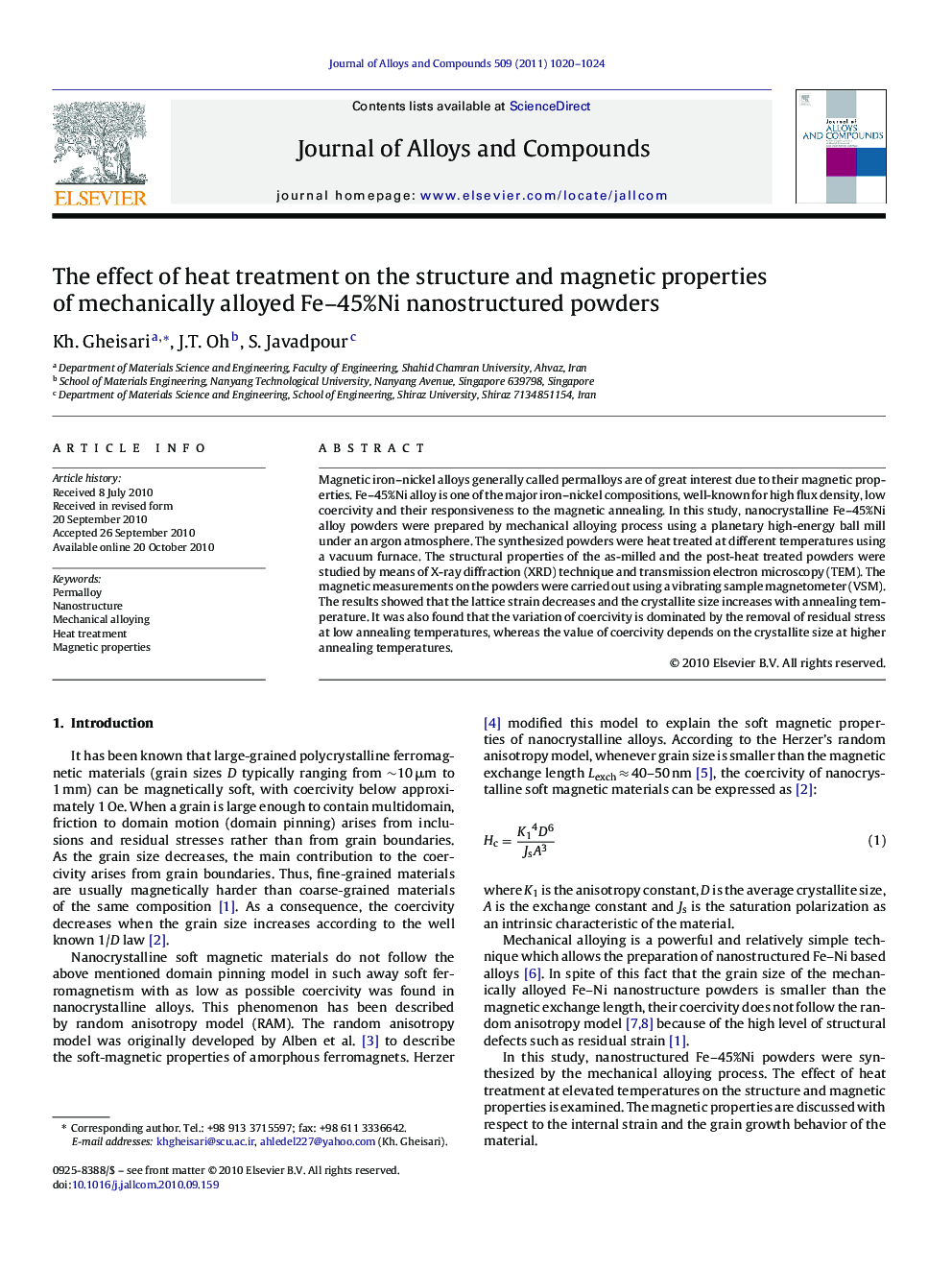| کد مقاله | کد نشریه | سال انتشار | مقاله انگلیسی | نسخه تمام متن |
|---|---|---|---|---|
| 1618865 | 1005712 | 2011 | 5 صفحه PDF | دانلود رایگان |

Magnetic iron–nickel alloys generally called permalloys are of great interest due to their magnetic properties. Fe–45%Ni alloy is one of the major iron–nickel compositions, well-known for high flux density, low coercivity and their responsiveness to the magnetic annealing. In this study, nanocrystalline Fe–45%Ni alloy powders were prepared by mechanical alloying process using a planetary high-energy ball mill under an argon atmosphere. The synthesized powders were heat treated at different temperatures using a vacuum furnace. The structural properties of the as-milled and the post-heat treated powders were studied by means of X-ray diffraction (XRD) technique and transmission electron microscopy (TEM). The magnetic measurements on the powders were carried out using a vibrating sample magnetometer (VSM). The results showed that the lattice strain decreases and the crystallite size increases with annealing temperature. It was also found that the variation of coercivity is dominated by the removal of residual stress at low annealing temperatures, whereas the value of coercivity depends on the crystallite size at higher annealing temperatures.
Research highlights▶ In this study, nanocrystalline Fe–45%Ni alloy powders were prepared by mechanical alloying process using a planetary high-energy ball mill under argon atmosphere. The synthesized powders were heat treated at different temperatures using a vacuum furnace. The results showed that lattice strain decreases and crystallite size increases with annealing temperature. We also found that the variation of coercivity is dominated by the removal of residual stress at low annealing temperature whereas the value of coercivity depends on the crystallite size at higher annealing temperature.
Journal: Journal of Alloys and Compounds - Volume 509, Issue 3, 21 January 2011, Pages 1020–1024